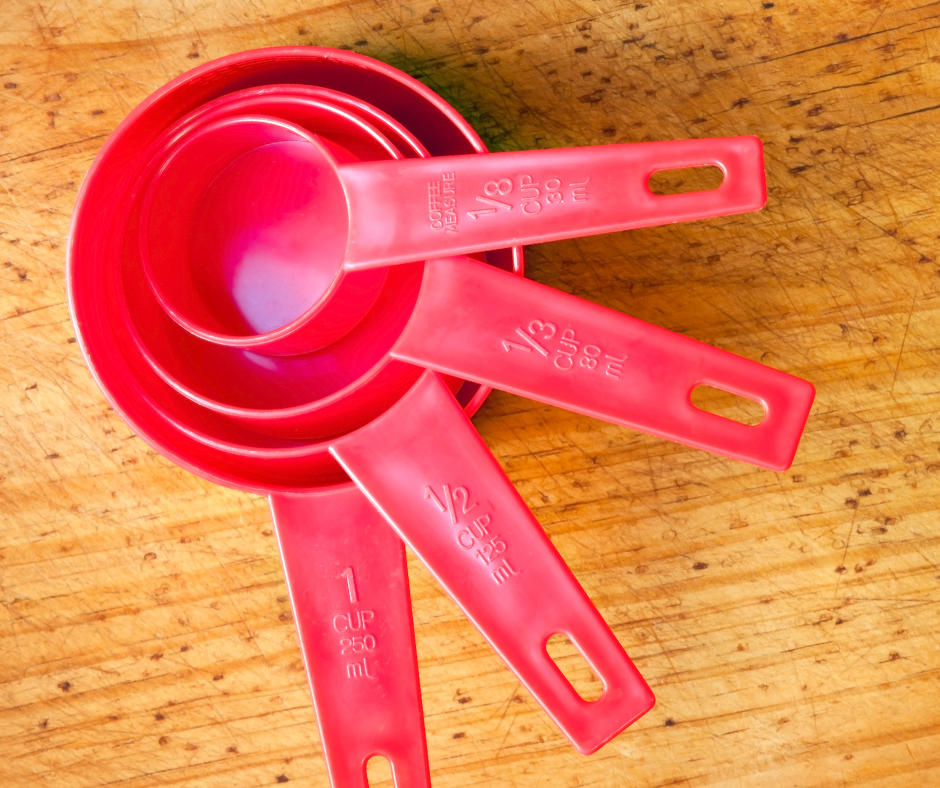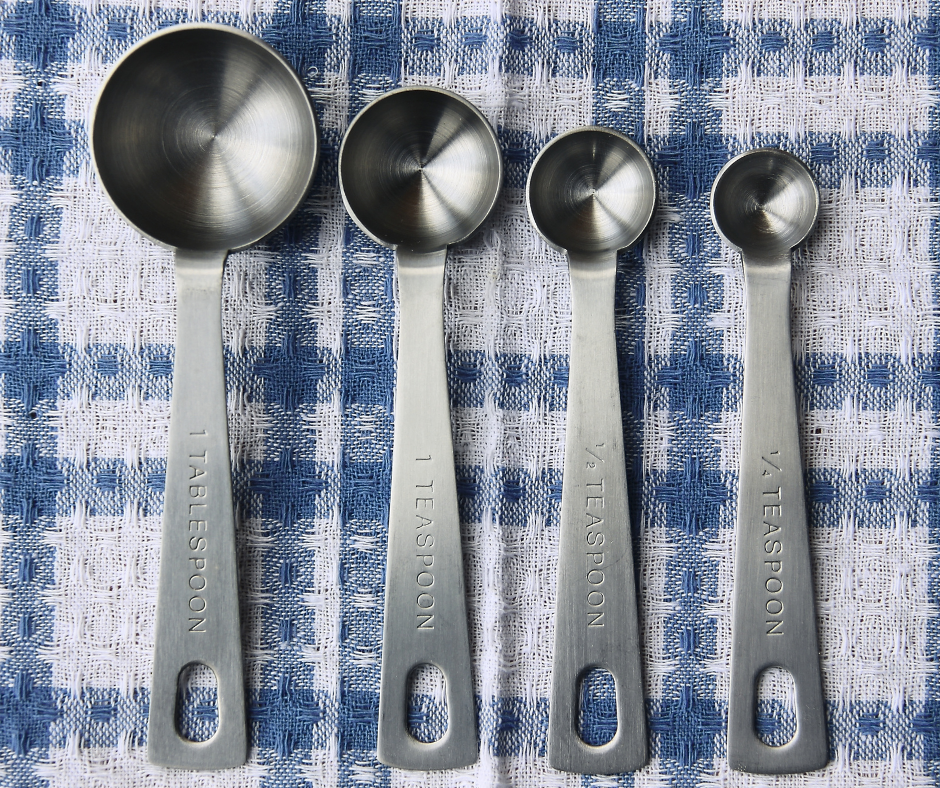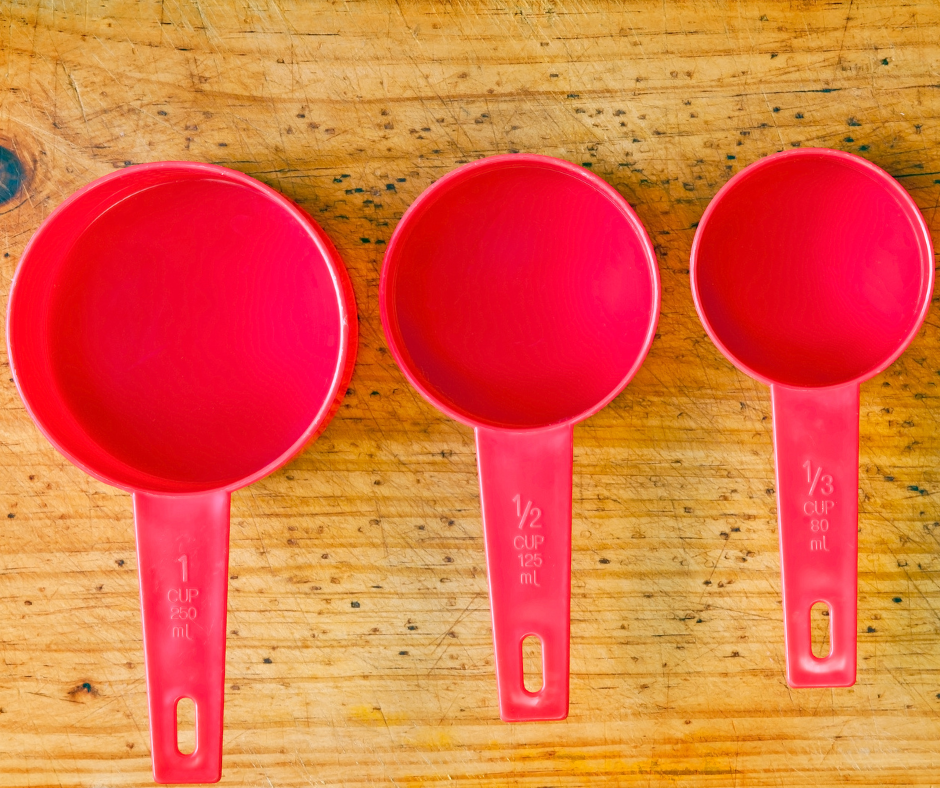Introduction
For anyone who enjoys cooking or baking, it’s easy to know how frustrating it can be if measurements are incorrect. Accurately measuring ingredients is important to achieving perfectly cooked or baked dishes with the exact flavors and textures needed. This blog will help you answer ‘How Many Tablespoons Are in a Half a Cup?‘.
Why Accurate Measurement Is Important In Cooking
Precision measurement is essential, especially in baking, where the baking soda, baking powder, or yeast may cause failure if not precisely measured. For example, a variation of 1/4 teaspoon may have a significant effect on the finished product. Measuring liquid ingredients is equally as crucial. Too much or too little of the right liquid can change the recipe’s taste and texture entirely.
Key Conversion Factors: Tablespoons And Cups
Two conversion factors, tablespoons and cups, are frequently used in cooking. Tablespoons become convenient for measuring small quantities of ingredients like salt, spices, or baking powder. For liquid ingredients or large measured quantities like flour or sugar, cups are used. Tablespoons are usually abbreviated as “Tbs” or “TSP,” while cups are abbreviated as “CUP” or “C.” When chopping or measuring ingredients for a recipe, it’s essential to remember that an accurate conversion between tablespoons and cups can save enormous time and effort in the kitchen.
In summary, mastering basic measurement conversions like the number of tablespoons in 1/2 cup will make your cooking experience more enjoyable and worthwhile. In this article, we have seen eight tablespoons in 1/2 cup. It is a quick conversion that enhances your dish’s flavors and textures.
Basic Kitchen Conversions
Understanding The Conversion Factor For Tablespoons And Cups
Accurately measuring ingredients is crucial to achieving perfectly cooked or baked dishes with the required flavors and textures. Two conversion factors, tablespoons, and cups, are frequently used in cooking. Tablespoons are generally used for measuring small quantities of ingredients like salt, spices, or baking powder. In contrast, cups are used for liquid ingredients or large measured quantities like flour or sugar.
In cooking, tablespoons and cups are abbreviated as “Tbs” or “TSP” and “CUP” or “C,” respectively. It’s essential to remember that a precise conversion between tablespoons and cups can save enormous time and effort in the kitchen.
How Many Tablespoons Are in a Half a Cup?
The frustration of incorrect measurements can be significant for anyone who enjoys cooking or baking. Precision measurement is essential, especially in baking, where even a slight variation of 1/4 teaspoon can cause failure. Measuring liquid ingredients is equally as crucial, as too much or too little of the right liquid can change the recipe’s taste and texture entirely.
For successful cooking, it is imperative to have precise measurements. Therefore, determining the number of tablespoons in a half cup is straightforward: 0.5 x 16 = 8. So, there are exactly eight US tablespoons in a half cup.
Mastering basic measurement conversions like the number of tablespoons in a half cup can make your cooking experience more enjoyable and worthwhile. In conclusion, accuracy in measurements will always be the key to achieving the perfect flavors and textures in your dishes.
Measuring Tools
The Importance Of Precise Measuring Tools In Achieving Accurate Measurements
Accurate measurements of ingredients are crucial in cooking and baking to achieve consistency in the flavor and texture of dishes. One of the keys to accurate measurements is using precise measuring tools. Even slight variations in measurements can significantly affect the outcome of a dish, causing it to be too salty, too sweet, or not set properly.
To ensure accurate measurements, it’s essential to use the right measuring tools. Measuring spoons and cups are the most commonly used tools in cooking and baking. With their precise measurement markings, it’s easy to measure exactly the ingredients required for a recipe. A slight variation in the amount of ingredients can adversely affect the taste and texture of dishes.
Different Types Of Measuring Spoons And Cups
Measuring spoons and cups come in various styles and materials, including plastic, metal, or glass. Some measuring spoons and cups are labeled with metric and US measurements, making it easier to follow recipes from different sources worldwide.
Measuring spoons usually come in four sets: 1 tablespoon, 1 teaspoon, 1/2 teaspoon, and 1/4 teaspoon. While measuring cups come in sets of four: 1 cup, 1/2 cup, 1/3 cup, and 1/4 cup.
In conclusion, accurate measurements are essential in cooking and baking to achieve consistent and delicious results. Correct measuring tools, such as spoons and cups, are necessary to ensure accurate measurements. Using reliable measuring tools and mastering basic measurement conversions can make cooking and baking more enjoyable and successful.
Tips For Measuring Accurately
The Right Way To Scoop Ingredients Into A Tablespoon Or Cup
To ensure accuracy in measuring ingredients, it’s important to know how to scoop them correctly into measuring cups and spoons. When measuring dry ingredients, such as flour or sugar, use a spoon to scoop the ingredient into the measuring cup or spoon until it is overflowing, and then level off the excess with a straight-edge spatula.
For sticky ingredients, such as honey or peanut butter, it’s best to use a spatula to scrape them into the measuring cup or spoon, leveling off the surface for an accurate measurement. Liquids should always be measured at eye level, with the measuring cup on a flat surface, to avoid inaccuracies.
Leveling Off Measurements For Consistency
Consistency is key in cooking and baking. When measuring ingredients, it’s important to level off the top of the measuring cup or spoon to ensure that the measurement is accurate. This can be done with a straight-edge spatula or by using the flat edge of a knife. Inaccurate measurements can significantly affect the outcome of a dish, so it’s important to take the extra time to level off measurements properly.
By following these tips for accurate measuring, you will ensure consistent and delicious results in your cooking and baking. Using the appropriate measuring tools and techniques will make a significant difference in the taste and texture of your dishes.
Converting Other Measurements
How To Convert Other Common Kitchen Measurements To Tablespoons And Cups
Measuring ingredients accurately is crucial for the success of any recipe. While most recipes give measurements in tablespoons and cups, some may have different units of measurement. It’s important to know how to convert these measurements to ensure accurate results.
Teaspoons To Tablespoons, Ounces To Cups, And More
To make conversions easier, here’s a table of some common kitchen measurements and their equivalent in tablespoons and cups:
| Measurement | Equivalent in tablespoons | Equivalent in cups |
|---|---|---|
| Teaspoons (tsp) | 1/3 tablespoon (tbsp) | 1/48 cup |
| Fluid ounces (fl oz) | 2 tablespoons (tbsp) | 1/8 cup |
| Pints (pt) | 32 tablespoons (tbsp) | 2 cups |
| Quarts (qt) | 64 tablespoons (tbsp) | 4 cups |
| Gallons (gal) | 256 tablespoons (tbsp) | 16 cups |
Whether you’re following a recipe or creating your own, understanding how to convert measurements is an essential skill in the kitchen. By using a combination of measuring spoons and cups and following the correct techniques for measuring ingredients, you can ensure consistent and delicious results every time.
Adjusting Recipes With Conversions
Adapting Recipes For Different Serving Sizes Using Conversions
When cooking for one or just a few people, it’s often necessary to adjust recipes to create smaller portions. Luckily, this task is simple with the right measurement conversion knowledge. For example, if a recipe calls for one cup of an ingredient, you can easily divide that in half to get 8 tablespoons or 24 teaspoons. Similarly, if the recipe calls for three-quarters of a cup, that equals 12 tablespoons. Understanding these equivalents can make scaling down recipes a breeze.
Changing The Number Of Tablespoons And Cups In A Recipe
Once you’ve determined the new measurements needed for your adapted recipe, it’s important to make sure you use the correct measuring tools. Using a combination of measuring spoons and cups ensures the most accurate results. When dividing a recipe in half, for instance, you’ll want to measure out 8 tablespoons rather than simply eyeballing half of a cup. This will help ensure consistent results with each batch. Additionally, consider any adjustments needed for cooking time and temperature when changing the recipe size.
Understanding how to convert other common kitchen measurements to tablespoons and cups is also important. For example, a tablespoon equals 1/3 of a teaspoon, while a fluid ounce equals 2 tablespoons. Several helpful conversion charts are available online, allowing you to easily convert between different measurement units.
Adapting recipes for different serving sizes is simple with the right knowledge. By understanding measurement conversions and using the correct measuring tools, you can ensure consistent and delicious results every time, no matter the serving size.
Common Conversion Mistakes
Frequent Errors Made When Converting Measurements
One of the most common mistakes when cooking is incorrectly measuring ingredients. This can lead to disastrous results and ruined meals. When scaling down recipes to create smaller portions, it’s important to understand measurement conversions to avoid errors.
How To Avoid Incorrectly Measuring Ingredients
To avoid this mistake, using the correct measuring tools and understanding measurement equivalents is important. For example, it may seem easy to eyeball half a cup instead of measuring out 8 tablespoons when converting from cups to tablespoons. However, using a combination of measuring spoons and cups ensures the most accurate results.
Investing in a kitchen scale can also improve measurement accuracy, particularly in small quantities. A scale can measure in grams and ounces, making it easy to get precise ingredients.
Several helpful conversion charts are available online when converting other kitchen measurements to tablespoons or cups. For instance, a tablespoon equals 1/3 of a teaspoon, while a fluid ounce equals 2 tablespoons. Understanding these conversions can ensure consistent and delicious results with each batch.
In summary, avoiding common conversion mistakes involves understanding measurement equivalents and using the correct measuring tools. Following these tips makes it easy to scale down recipes and confidently create smaller portions.
Digital Resources And Apps
Digital Tools To Help Convert Measurements Accurately
To avoid common conversion mistakes, using the correct measuring tools and understanding measurement equivalents is important. Aside from the traditional measuring cups and spoons, several digital tools are available online to help with conversions.
One of the most popular and reliable digital resources is online conversion calculators. These calculators can convert anything from teaspoons to gallons and easily switch between US and Metric measurements. Some popular online conversion calculators include UnitConverter.net, Convert-me.com, and Online-Calculator.org.
Various measurement conversion apps are available for those who prefer using their smartphones. Some top-rated apps include Kitchen Calculator PRO, Unit Converter, and Convert Units. These apps feature easy-to-use interfaces and can be used offline, making them convenient for use in the kitchen.
The Best Apps For Converting Tablespoons To Cups
When converting tablespoons to cups, specific apps are available to make the process even easier. Two of the most popular apps for this purpose are Kitchen Calculator PRO and AccuChef. These apps allow for easy conversion between various measurements, including tablespoons and cups.
Kitchen Calculator PRO also includes a recipe multiplier feature, which makes it easy to scale up or down recipes as needed. AccuChef, on the other hand, includes a large recipe database and allows users to create their custom recipes and convert the measurements accordingly.
Incorporating digital tools and apps can make measuring and converting ingredients much easier and more accurate. Whether using an online conversion calculator or a dedicated measuring app, these resources can help avoid common conversion mistakes and lead to consistent and delicious results in the kitchen.
Conclusion
Summary Of Key Points
Now you should know the answer to ‘How Many Tablespoons Are in a Half a Cup?’. Digital resources and apps can significantly aid novice or experienced chefs with measurement conversion. Various online conversion calculators and a large selection of smartphone apps are available, which are great tools in the kitchen.
Benefits Of Accurate Measurement And Conversions In Cooking
Accurate measurement conversions are critical in the cooking process. Measurements play an essential role in texture, flavor, and overall quality. Too much or too little ingredients can throw off a recipe’s balance, leading to unsatisfactory results. Having accurate and precise measurements is key to consistently excellent cooking.
FAQ: How Many Tablespoons Are in a Half a Cup: Kitchen Conversions Simplified
Q: How Many Tablespoons Are in a Half a Cup in the US?
A: In the US, there are 8 tablespoons in half a cup.
Q: Is it necessary to use tablespoons and cups in cooking?
A: Yes, measuring ingredients accurately is crucial for making successful recipes.
Q: What other common kitchen measurement conversions should I know?
A: Here are some common kitchen measurement conversions:
- 1 tablespoon = 3 teaspoons
- 1 cup = 16 tablespoons
- 1 fluid ounce = 2 tablespoons
- 1/4 cup = 4 tablespoons
- 1/2 cup = 8 tablespoons
Q: How can I make these conversions easier to remember?
A: You can create a conversion chart to keep in your kitchen or use measuring cups and spoons that have these measurements labeled for easy reference.
Q: Can I use these conversions in any recipe?
A: These conversions are specifically for US measurements. Other countries may use different measurements, so checking the recipe for the appropriate measurement system is important.
Q: What should I do if a recipe calls for a specific measurement I don’t have?
A: Use a conversion chart or online converter to determine the appropriate amount of the ingredient in the measurement you do have. You may need to adjust the recipe accordingly based on the conversion.



